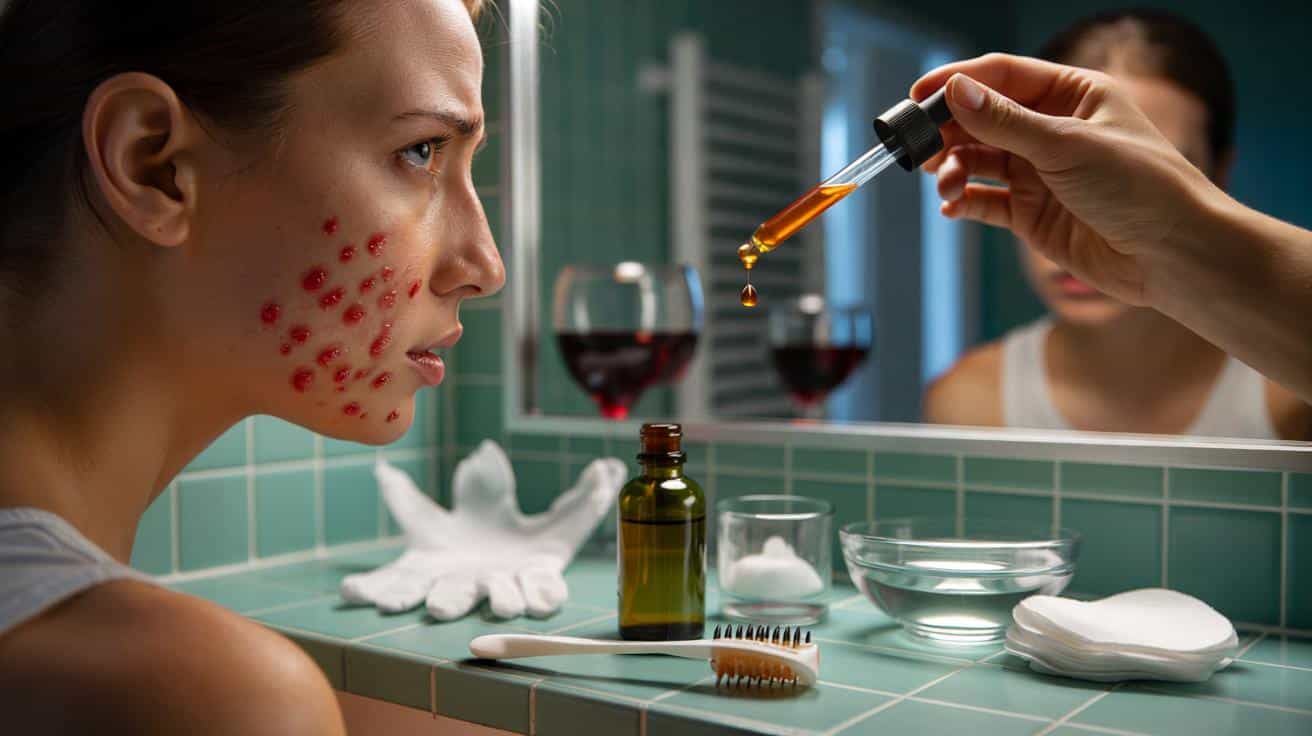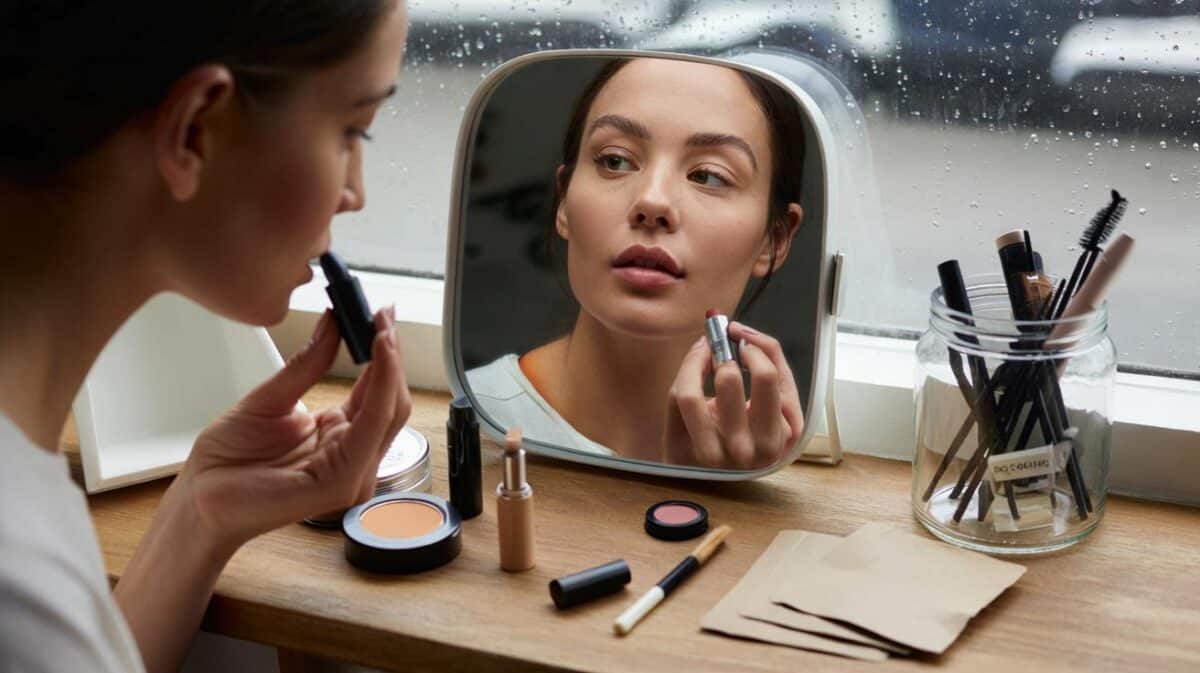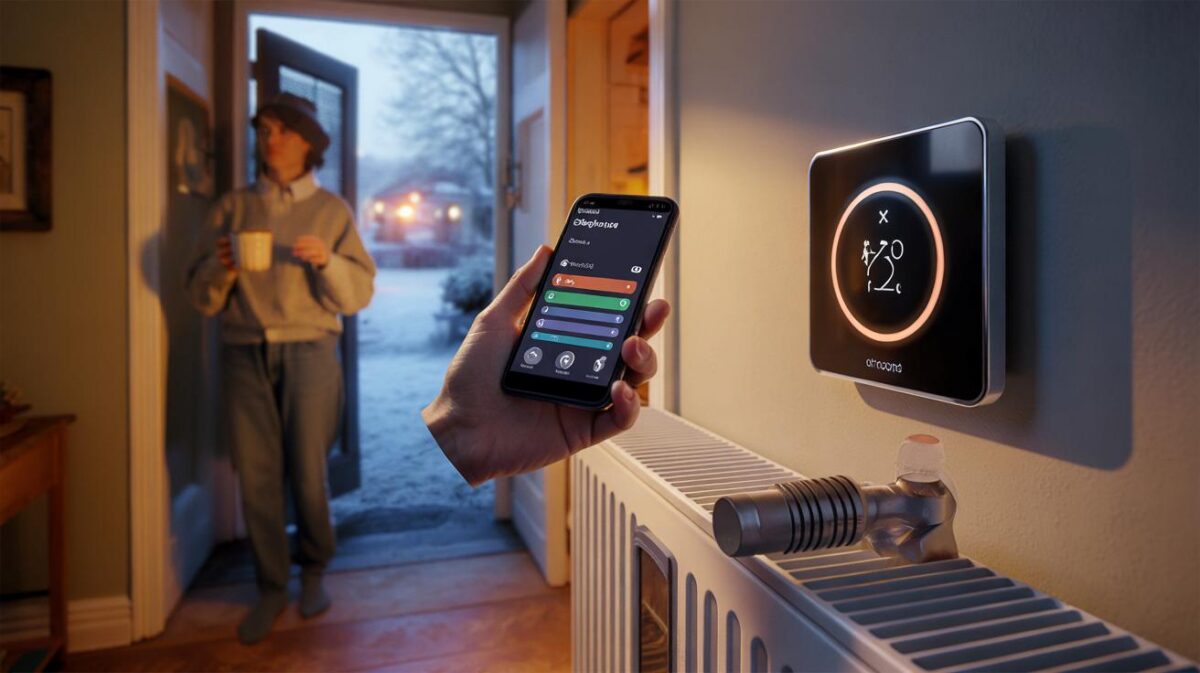Micro-needling at home looks simple on TikTok: a tidy roller, a promise of glow, and a clocked minute of bravery. Skin texture vanished, pores reduced, scars fading — the algorithm whispers it’s easy. I believed it. Then my bathroom turned into a tiny cautionary tale I can still feel when I look in the mirror.
I lined up my bottles like chess pieces, slid the tiny roller from its box, and watched my reflection steel itself. One glass of supermarket Pinot on the radiator, that hopeful new-tool shimmer in the air.
I thought I was prepared. I had watched the videos, skimmed the advice, even wiped the roller with something that smelled like a hospital corridor. The first passes felt oddly satisfying — a little peppery, a little brave. The glow came in fast. The heat followed faster.
I went to bed feeling triumphant and woke up looking like I’d argued with a cheese grater.
Red. Patchy. Angry. And worse on the right cheek where I’d pushed a bit more because I’d read that stubborn texture “likes enthusiasm.” I did the one thing I shouldn’t have done: I reached for the wrong serum. Then the nightmare bloomed.
The promise you see, the skin you have
Micro-needling is built on a seductive idea: controlled injury triggers healing, collagen whispers back into tired skin, and you get a smoother, brighter face. At home, that idea meets impatience and a bathroom light that hides sins. I chased the quick version.
What I didn’t clock in the moment is how your skin, that practical gatekeeper, changes the rules the second you pierce it. The tiny channels don’t just invite your moisturiser in — they roll out a red carpet. So when I layered a potent retinoid on top, my face didn’t “drink it in”; it gulped. It gulped and then it screamed.
The next morning, my cheeks felt tight and glassy. By lunch, I had hot, coin-shaped patches that tingled if a breeze looked at them. Makeup slid off like rain on glass. A friend said it looked like a sunburn. It wasn’t. It was a lesson in how products behave when the skin barrier is no longer a barrier at all.
Here’s the unpretty science of my pretty bad idea. Micro-needling creates micro-channels that can take hours to close. That window is generous to gentle hydrators and merciless with actives. Vitamin C, retinoids, exfoliating acids — dream ingredients at the wrong time become chaos in a bottle. The barrier, your humble bouncer, gets sent on a tea break, and the nightclub floods.
I also rolled like a lawn, not a face. Straight lines, too many passes, a little pressure where pores felt bossy. My skin responded the way skin does when you dare it: it delivered inflammation, then flaking, then that haunted-biscuit look under concealer. A dermatologist later told me that what I’d called “a purge” was **irritant contact dermatitis**. It looked like a story of discipline. It was a story of overdoing.
The safer, saner way I wish I’d known
The routine that rescued me wasn’t heroic. It was gentle and dull and worked. Clean tools. Clean canvas. Saline, a minimalist hydrating serum, and a fragrance-free moisturiser. If you’re going to try at-home micro-needling, keep the needle length conservative — the kind designed for enhanced product feel, not scar revision. Think 0.2–0.3 mm, not bragging rights. Think “evening, low light, early bedtime.”
Less is everything. Two light passes per area, no pressure, a patient grid rather than obsessive scribbling. Park the actives for several days afterwards. Hyaluronic acid is your friend, but a simple one without citrus, menthol, or essential oils. SPF the next day even if the sky looks bored. Let the channels close in peace. Let your skin act its age and yours.
We’ve all had that moment when a tiny win tempts us into a bigger gamble. That was me, betting my cheeks on a trend. Let’s be honest: nobody actually does this every day. The real rhythm looks boring on camera, which is why you rarely see it. It’s a fortnightly ritual, a calm room, a sterilised tool soaking in 70% isopropyl alcohol for ten minutes, and a decision to leave your turbo serums in the drawer until at least day three.
“At-home micro-needling can be reasonable if you treat it like a guest, not a housemate,” says Dr. Priya K., consultant dermatologist in London. “Keep needle lengths conservative, avoid actives for a few days, and stop at the first sign of irritation. If you want scar revision, book a professional.”
- Keep it short: 0.2–0.3 mm for at-home tools, no pressure, two passes max.
- Keep it clean: sterilise the head before and after, replace regularly, never share.
- Keep it simple: salty water spritz or thermal water, then a bland hydrator and a plain moisturiser.
- Keep it spaced: once every 2–4 weeks, skip retinoids/acids for 3–5 days afterwards.
- Keep it shaded: daily broad-spectrum SPF, hat if you’re out, no hot yoga that evening.
The night that changed my bathroom
My mistake wasn’t just a skincare blip. It was a mirror of how we treat time and results. I wanted “fast” and got “flamed.” Friends texted me product suggestions like confetti. I did what I should have done first — I rang a professional, sent photos, and was told to stop everything fancy. Oat. Petrolatum. Cool compress. No drama, just repair.
The tenderness lasted a week. The humility has lasted longer. When I eventually tried again, months later, I treated the process like ironing a silk shirt — methodical, light-handed, almost boring. The reward wasn’t viral. It was quiet skin that didn’t complain and a tiny lift in texture that felt earned. I stopped chasing dazzle and started valuing calm.
This isn’t medical advice; it’s a lived file note with a few guard rails. If your skin is reactive, if you’re on acne medication, if you’re pregnant, ask someone qualified before you buy a tool because the internet said glow. Skin has a memory, and mine now recalls the week I learned patience the prickly way. I hope yours learns the kinder version.
There’s a wider thing here about how beauty tools make us feel like we’re in control. We are, but only in the gentle margins. The big wins come from unshowy consistency: sunscreen, sleep, stress management, and sidestepping ingredients that pick fights. Not every new device has to live in your routine. Not every routine has to be new.
The nightmarish mistake wasn’t the roller. It was the rush. It was believing that more pressure equals more progress. It was layering actives onto an open door and acting surprised when the party got rowdy. It took one bad weekend and several good choices to walk it back. That’s the part the algorithm skips. That’s the part that makes a difference.
The funny thing is I still like the idea of micro-needling. I just like it with boundaries and boredom and a long pause between sessions. My bathroom hasn’t turned into a clinic. It’s turned into a calmer place where tools live in boxes and my face gets a say. The glow that arrives slowly tends to stay.
| Point clé | Détail | Intérêt pour le lecteur |
|---|---|---|
| Respect the barrier | Skip actives for 3–5 days after at-home micro-needling | Reduces risk of burns, flares, and post-inflammatory marks |
| Go short and gentle | Stick to 0.2–0.3 mm, light passes, infrequent sessions | Safer results without clinic-level downtime |
| Clean like a pro | Disinfect heads, replace often, never share tools | Cuts infection risk and keeps results predictable |
FAQ :
- Can at-home micro-needling really help with texture?It can modestly soften fine texture over time, especially when paired with simple hydration and SPF. For scars or significant concerns, a professional treatment is the safer route.
- What was the exact “nightmarish mistake” you made?I applied a strong retinoid on freshly needled skin. The open micro-channels amplified irritation, leading to a week of redness and flaking.
- How often is it sensible to micro-needle at home?Think sparingly: every 2–4 weeks with short needles and a calm routine. More isn’t better here.
- Which products are safest to use right after?Bland hydrators like hyaluronic acid in a simple formula, a fragrance-free moisturiser, and careful SPF the next day. Park acids, vitamin C, and retinoids for several days.
- When should someone skip at-home micro-needling altogether?If you have active acne, eczema flares, rosacea in a hot phase, are pregnant, or on certain medications. When in doubt, ask a clinician before you begin.








